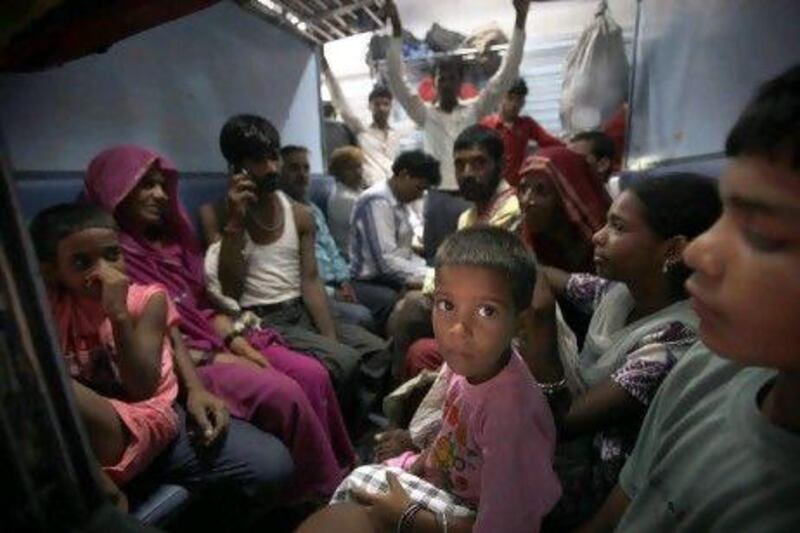NEW DELHI // India's worst power cut in a decade yesterday left more than 300 million people sweltering in the heat without electricity for more than eight hours.
The grid failure in Northern India shut down transport networks, halted water supplies and forced businesses and hospitals in nine states to run on generators.
The grid, which supplies power to 28 per cent of the population, including the nation's breadbasket, Punjab, and the most populous state, Uttar Pradesh, crashed around 2.30am because it could no longer keep up with the huge demand for power in the hot summer.
More than 200 long-distance electric trains that run across north India ground to a halt when the power supply cut out. Delhi's metro, which ferries up to 1.8 million people a day, stopped in its tracks and added to early morning commuter chaos. In addition, every city and town in the northern states was left without functioning traffic lights, leading to gridlock.
Water supplies, already a problem with the late onset of monsoon, ran short when pumps stopped.
Even the prime minister's and president's residences went without electricity for a few hours before emergency power from gas turbines near Delhi were re-routed to the centre of the capital, or Lutyens Delhi, where leading politicians and bureaucrats live.
By evening, 15 hours after the cut began, full power had been restored.
It was too late for Chandan Pal, 31, a business executive who uses the metro to travel from central Delhi to Gurgaon in the neighbouring state of Haryana. Mr Pal tried to change his travel plans but was unsuccessful.
"I woke up covered in sweat because there was no electricity. Because of that I was running late for work, then the metro was not working, then my taxi got stuck in traffic," he said.
"My day was already catastrophic, then I saw gridlocks everywhere. The scene was close to being apocalyptic."
Although power cuts are common in India, yesterday's was "the worst to hit India in a decade", said Sushil Kumar Shinde, the power minister.
Mr Shinde said he was not sure exactly what caused the collapse and had formed a three-member committee to investigate it. One suggestion was that the grid collapsed because of states drawing more than their allotted power to meet the summer demand.
"It cannot be said whether over-drawing states is one of the reasons, or there is any other reason. The panel will find out." He insisted the country had one of the best power grids in the world.
India leaned on its northern neighbour Bhutan for additional hydroelectrical power, said Mr Shinde, as well as diverted power from the eastern and western grids.
A common cause of such power failures is over drawing by state utilities, said Kameswara Rao, lead analyst of energy utilities and mining with PricewaterhouseCoopers, India.
"The poor monsoon so far means that demand remains higher, and the supply lower, than normal. But equally, it could be a technical fault that cascaded along the system," he said. "We will have to wait for the fault analysis to be undertaken."
India's demand for electricity has soared as its economy has grown sharply. The Central Electricity Authority reported power deficits of about 8 per cent in recent months.
Even though a third of households do not have electricity, according to last year's census, the power cut was a reminder of the country's desperate need to upgrade its infrastructure. The supply shortfall, especially from hydro and gas-generated power projects, "certainly places a stress on the grid and given the thin reserve margins, it makes it very difficult for system operators", Mr Rao said.
Hydroelectric power drawn from Bhutan kick-started Delhi's metro services yesterday, which resumed after three hours of disruption.
"This will obviously get worse," said Subhash Chawla, a 65-year-old retiree who took the metro once power was restored. "Unless the metro has a separate power supply, it will be chaos in the future."
[ sbhattacharya@thenational.ae ]
* With additional reporting by the Associated Press and Dow Jones
Follow
The National
on
[ @TheNationalUAE ]
& Surya Bhattacharya on
[ @SuryatapaB ]





